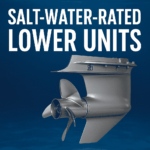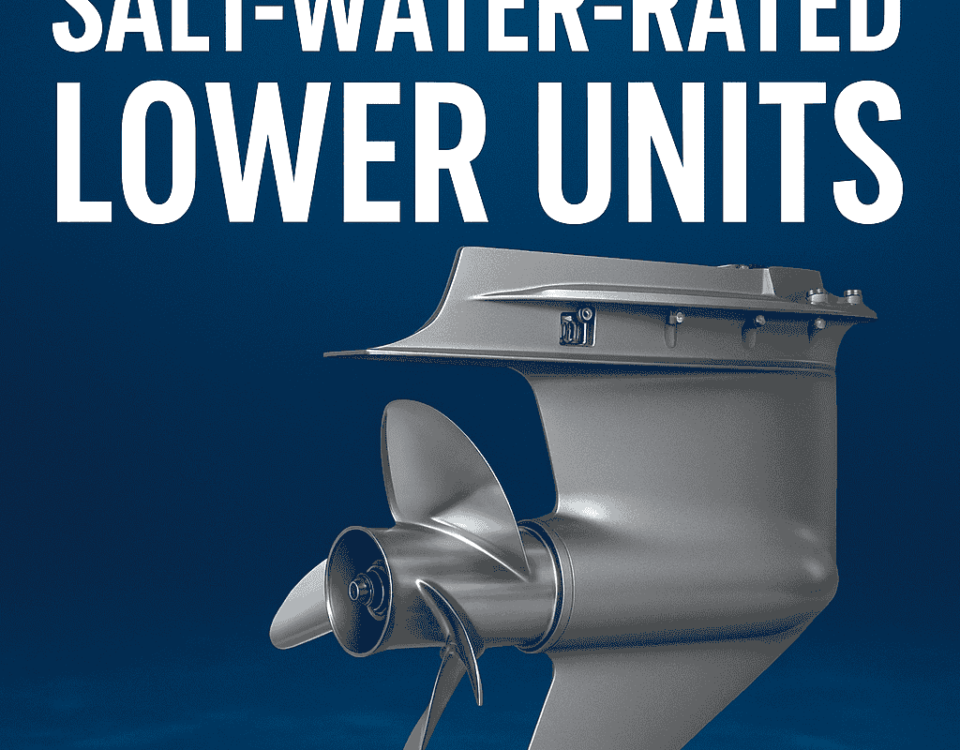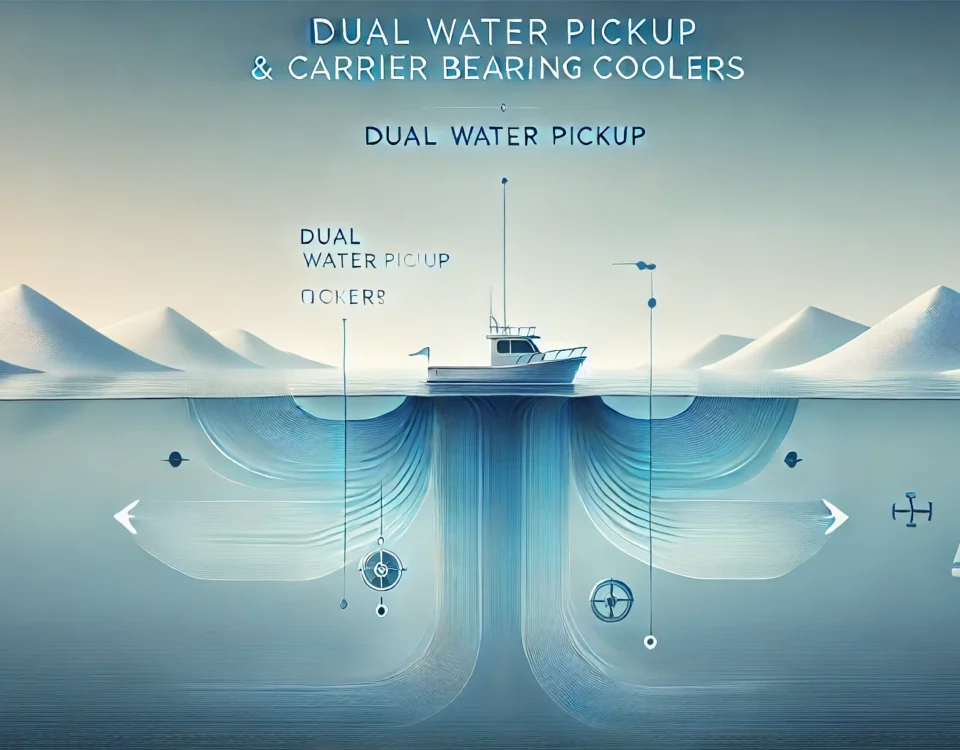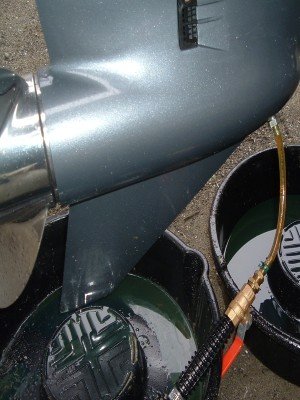
Salt-Water-Rated Lower Units: The Complete Buyer’s & Care Guide (for Coastal, Brackish, and Offshore Boaters)
August 18, 2025How to Identify the Correct Yamaha Lower Unit with a Real-World Example
Buying a replacement gearcase (“lower unit”) is easy only when you know the exact engine model and configuration. This guide walks mariners, technicians, and boaters through everything needed to identify the right lower unit for a Yamaha outboard—using a real case study from a 2011 Yamaha F150 with the casting code 63P and serial 63PX1096233.
Why correct identification matters
Getting the model even slightly wrong (shaft length, rotation, gearcase family, gear ratio) can lead to:
- A lower unit that won’t bolt up
- Wrong driveshaft length or spline count
- Prop, shift, or water-intake mismatch
- Costly returns and downtime
Bottom line: Know your engine model number, shaft length, rotation, and gearcase family before you order.
The 4 things every parts seller will ask you
- Complete engine model number (e.g.,
F150TXRorLF150XCA) - Shaft length (15″ S, 20″ L, 25″ X, 30″ U)
- Rotation (standard/right-hand or counter/left-hand)
- Gearcase family (e.g., 4.25″ “mid” case used on F150, or 4.75″ V6 case)
Pro tip: Yamaha part numbers change (“supersede”) over the years. If your four identifiers are correct, the latest superseded assembly will still be right for your motor.
Where to find the Yamaha engine model number on the outboard
| Location | What you’ll see | Notes |
|---|---|---|
| Transom bracket ID plate (port side) | Model (e.g., F150TXR), serial, sometimes month/year of manufacture | This is the #1 source. Wipe clean; use a light. |
| Inside cowling decals/labels | Supplemental ID label on some models | Helpful if the external plate is damaged/missing. |
| Freeze plug on powerhead | Stamped serial/production number | Useful cross-reference when labels are gone. |
| Original owner’s manual / registration | Printed model/serial | Not always accurate after repowers or swaps. |
If the model plate is missing or unreadable, jump to the “Partial information” and “Forensics” sections below.
How to decode a Yamaha engine model number
A typical Yamaha four-stroke model looks like: F150TXR
| Segment | Meaning | Common values |
|---|---|---|
| F | Four-stroke (two-strokes use different letters) | F |
| 150 | Horsepower | Numeric |
| L/XL/S/U (shaft code is usually near the end) | Shaft length | S = 15″, L = 20″, X = 25″, U = 30″ |
| LF (prefix) | Counter-rotation (left-hand) | LF150... = counter-rotation version |
| T | Denotes a specific configuration/series (commonly power trim/remote model family) | Seen on many remote models |
| Last letters | Production/run designation (pre-2006 often hinted at model year; after mid-2005 in North America Yamaha stopped using model year in the model code) | R, C, D, etc. |
Don’t get hung up on the very last letter for year. After mid-2005 in North America, Yamaha no longer encoded model year in the model number. Use the manufacture date printed on the transom plate if you need date info.
Shaft length, rotation & gearcase at a glance
| Feature | How to verify | Why it matters |
|---|---|---|
| Shaft length | Measure from the mounting surface on the transom bracket to the anti-ventilation plate: ≈15″, 20″, 25″, or 30″ | Driveshaft and shift rod lengths differ by shaft length. |
| Rotation | Look at the model (LF... = counter). Or note which prop you run. | Counter-rotation lowers use opposite gear sets. |
| Gearcase family | Measure the bullet diameter; note water intake style; check casting codes | Yamaha’s 4.25″ case (mid-size) vs 4.75″ V6 case are not interchangeable without other changes. |
| Gear ratio | Spin test (turn driveshaft, count prop turns) or specs | F150 4-stroke typically 2.00:1 with the 4.25″ case. |
Case study: Photo tag shows 63P → What does that mean?
You shared a photo of the lower-unit label showing:
- YAMAHA
- 63P
- Serial 63PX1096233
- “Made in Japan”
What that tells us:
- 63P is the Yamaha casting/family code associated with the F150 four-stroke platform and its 4.25″ gearcase (standard rotation in this case).
- The serial beginning with 63P… matches the engine family.
- On the motor’s transom bracket ID plate, the full engine model typically appears as
F150TXRfor a 25″ (X) shaft, standard rotation, in that era.
Conclusion for this case:
This engine is a Yamaha F150 four-stroke (F150TXR) using the 4.25″ gearcase with a 2.00:1 gear ratio, standard rotation, and 25″ (X) shaft.
Quick spec table for the example
| Item | Value |
|---|---|
| Engine family | Yamaha F150 4-stroke |
| Casting code on the tag | 63P |
| Typical model (from transom plate) | F150TXR |
| Shaft length | 25″ (X) |
| Rotation | Standard (right-hand) |
| Gearcase family | 4.25″ mid-size |
| Typical gear ratio | 2.00:1 |
| Prop shaft spline | 15-spline (common on mid/large Yamaha) |
If you don’t have the transom plate but do have 63P on the gearcase and know your motor is an F150, you are almost certainly dealing with the 4.25″ F150 gearcase (standard rotation unless you have an LF150… counter-rotation model).
Step-by-step workflow to identify the correct lower unit
- Find and photograph the ID plate on the port-side transom bracket.
- Write down model, serial, and manufacture date if shown.
- Decode the model:
- Confirm horsepower and stroke (e.g.,
F150= 150 HP, four-stroke). - Check for LF (counter-rotating) vs.
F(standard rotation). - Pull the shaft code:
S(15″),L(20″),X(25″),U(30″).
- Confirm horsepower and stroke (e.g.,
- Confirm gearcase family:
- F150 inline-4 uses 4.25″ gearcase (family code 63P on many castings).
- Big-block V6 motors typically use 4.75″ gearcases—not interchangeable with the F150 4.25″ without additional changes.
- Verify gear ratio (if in doubt):
- With the lower off the engine (or the spark plugs out and prop in neutral), turn the driveshaft and count prop rotations. F150 four-strokes are typically 2.00:1.
- Match the assembly:
- Order a complete gearcase for your specific model and shaft length (e.g.,
F150TXR→ 25″ standard rotation, 4.25″ case). - If you’re buying a new aftermarket Yamaha lower unit, confirm it’s the 63P/F150 4.25″ family with 2.00:1 ratio and your shaft length.
- Order a complete gearcase for your specific model and shaft length (e.g.,

Partial information? Here’s how to reverse-engineer the model
When the model plate is missing, use this “forensics” checklist:
| Clue you have | What it tells you | What to do next |
|---|---|---|
| Casting code “63P” on gearcase | F150 4-stroke family, 4.25″ gearcase | Measure shaft length (20″/25″/30″); check rotation (standard vs LF). |
| Serial beginning with 63P… | Confirms F150 family | Search for any remaining decals/stickers under cowling. |
| Shaft length measurement | 20″, 25″, or 30″ | Maps to L, X, or U in the model. |
| Prop direction or LF prefix on paperwork | Rotation (standard vs counter) | Standard uses F…, counter uses LF…. |
| Bullet diameter ≈4.25″ | Confirms mid-size F150 gearcase | Order the F150 (63P) family lower unit in your shaft length & rotation. |
| Owner claims “2011 F150” | Vintage reference only | Year isn’t critical for the gearcase family—focus on model + shaft + rotation. |
Common Yamaha shaft & rotation codes
| Code snippet | Meaning |
|---|---|
| F150… | Standard (right-hand) rotation |
| LF150… | Counter (left-hand) rotation |
| …S… | 15″ shaft |
| …L… | 20″ shaft |
| …X… | 25″ shaft |
| …U… | 30″ shaft |
Gearcase families you’ll encounter most
| Family | Typical use | Bullet diameter | Notes |
|---|---|---|---|
| 4.25″ mid | Inline-4 F150, many 4-cyl. mid-range fours | ≈4.25″ | 63P casting on many F150 parts. Gear ratio commonly 2.00:1. |
| 4.75″ V6 | 200–300 HP V6 platforms | ≈4.75″ | Heavier-duty, different water-intakes/casting; not a swap for F150 without changes. |
| Small midrange | 70–115 HP (varies by era/model) | ≈3.5–4.0″ | Different prop shaft/spline sizes and ratios. |
Quick ordering checklist (print this)
| Check | Verified? |
|---|---|
| I have my complete engine model (or a verified reconstruction) | |
| I measured my shaft length (15/20/25/30) | |
| I confirmed rotation (F vs LF) | |
| I identified the gearcase family (4.25″ for F150 63P) | |
| I verified the gear ratio if anything seemed odd | |
| I’m matching to a complete lower unit for my exact configuration |
Frequently asked questions
Q: My model ends in letters like R, S, T—what year is that?
A: After mid-2005 (North America), Yamaha stopped using model year in the model code. Use the manufacture date printed on the ID plate or your serial history, not the trailing letter.
Q: Will an F150 gearcase from another year fit my F150?
A: In the F150 inline-4 family, the 4.25″ (63P) gearcase with the same shaft length and rotation is typically interchangeable across many years. Always confirm the seller’s compatibility chart.
Q: Can I upgrade to a V6 (4.75″) gearcase on my F150?
A: Not as a simple bolt-on. That swap involves mismatched geometry, water inlets, and internal ratios. Stick with the 63P/F150 4.25″ family.
Q: My ID plate is gone—can a dealer identify the motor by serial?
A: Yes. Dealers can often look up build info from the serial. Also check the freeze plug on the powerhead and any stickers under the cowling.
Q: Standard vs. counter rotation—how do I tell?
A: Counter models use LF… at the beginning (e.g., LF150X…). If your paperwork or cowling badge lacks the L, you likely have standard rotation.
Installation & break-in pointers for a new gearcase
- Fill with premium marine gear lube, vent-to-drain, until it emerges from the top port; install new gaskets on the plugs.
- Shift-rod height adjustment must match spec; don’t force it.
- Water pump kit: install new impeller & housing while you’re in there.
- Initial run-in: Avoid long high-load runs for the first few hours; monitor for leaks, temps, and shift quality.
- Prop fitment: Use the correct thrust washer and hardware for the 4.25″ F150 hub system.
Real-world example recap (your engine)
- Photo label shows 63P and serial 63PX1096233 → F150 63P family.
- With a 25″ transom setup, the model decodes as F150TXR (25″, standard rotation).
- The correct replacement gearcase is the F150 4.25″ (63P) standard-rotation unit with 2.00:1 ratio in X/25″ length.
If you want a one-and-done solution, order a complete F150 (63P) 25″ standard-rotation assembly and transfer your anodes/prop.
Need a new aftermarket Yamaha lower unit?
Many boaters choose a high-quality aftermarket assembly to get back on the water quickly.
Looking for options? Check our curated selection of aftermarket Yamaha lower units here: Aftermarket Yamaha Lower Unit — F150 63P family
Summary: the fast path to the right Yamaha lower unit
- Photograph the ID plate → capture model, serial, and date.
- Decode the model → horsepower, shaft length (S/L/X/U), rotation (F vs LF).
- Confirm gearcase family → F150 inline-4 uses 4.25″ (63P).
- Double-check ratio & measurements.
- Order the complete assembly matched to your model, shaft length, and rotation.
Using the example above, the tag 63P and serial 63PX1096233 lead us straight to the F150 (63P) 4.25″ gearcase—25″ shaft, standard rotation, 2.00:1—exactly what a 2011 F150TXR needs.
If you’re still unsure, paste your photo of the ID plate or casting code into a message, and I’ll decode it for you on the spot.




